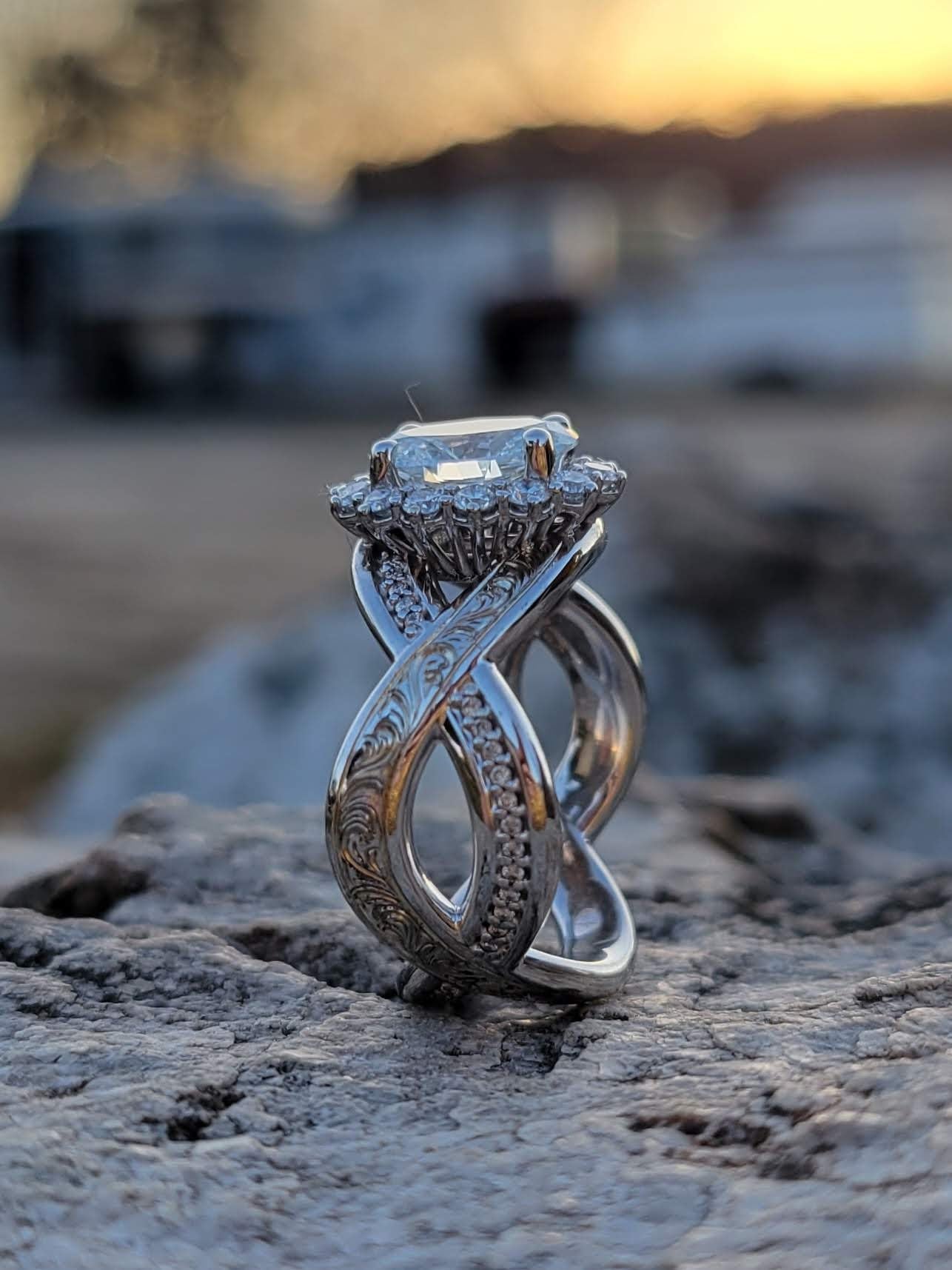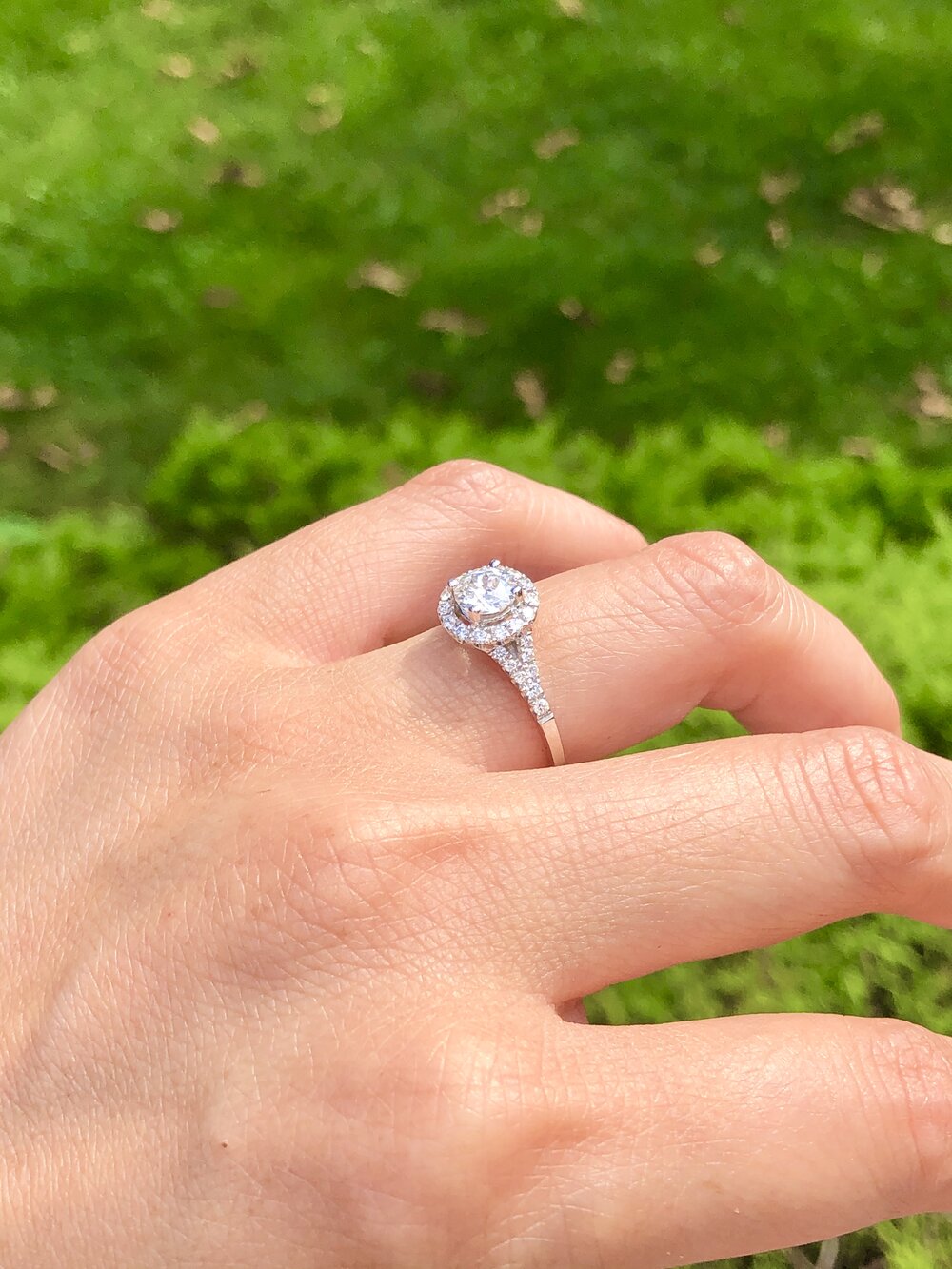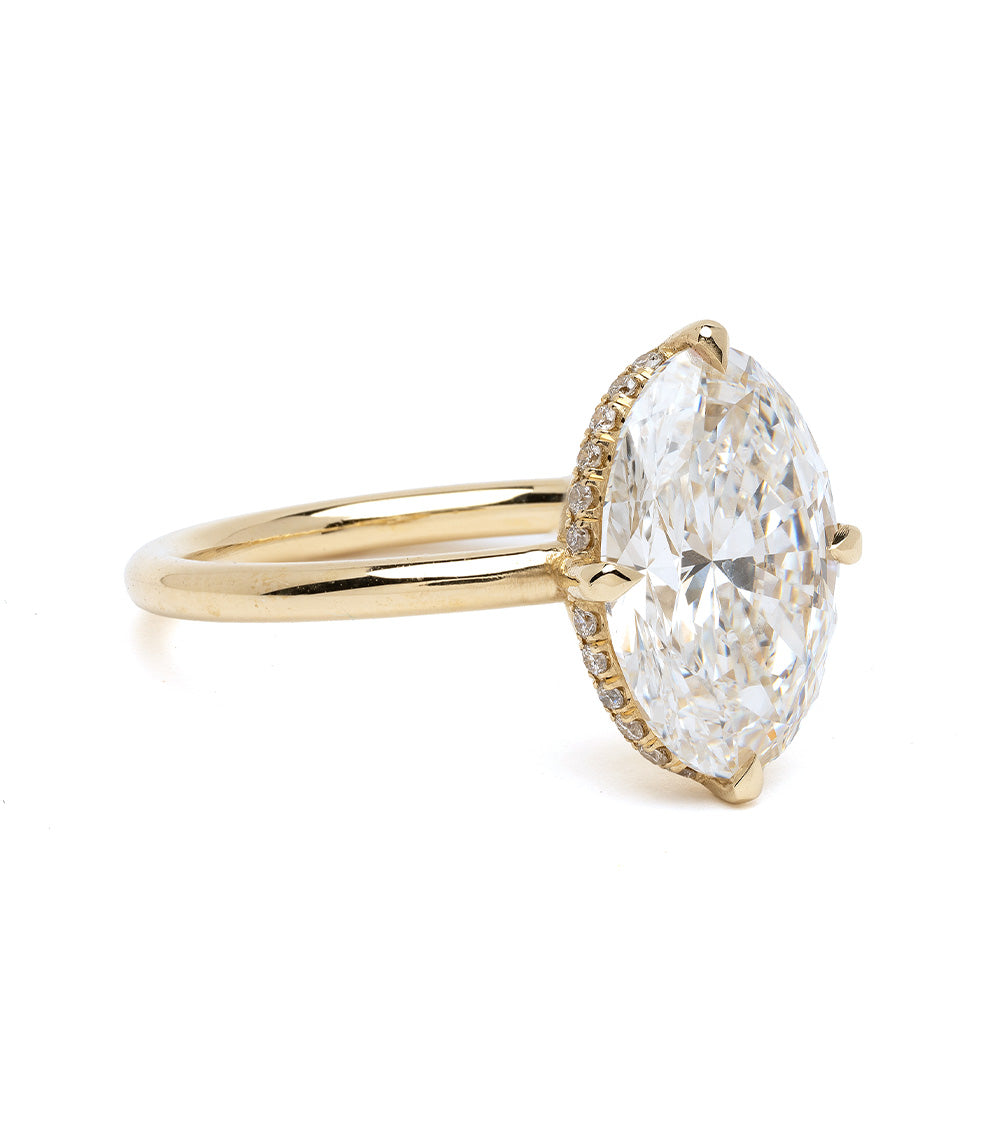How to Care for Your lab grown diamond engagement rings and Keep Them Sparkling for Life
Why Laboratory Grown Diamond Engagement Rings Are the Perfect Choice for Eco-Conscious Couples
Lab-grown Diamond involvement rings present a compelling alternative for pairs who focus on sustainability. These rubies offer a striking choice to standard mined rocks, substantially reducing ecological damage. They are produced utilizing sophisticated strategies that ensure both quality and radiance. As recognition of honest sourcing expands, several pairs are reassessing their selections. What ramifications does this change have for the future of the Diamond sector?

The Environmental Effect of Conventional Diamond Mining
Although Diamond mining has long been commemorated for its attraction and eminence, the ecological repercussions of typical mining practices are progressively worrying. The extraction of diamonds commonly includes considerable land interruption, leading to deforestation and habitat loss for plenty of types. Furthermore, the process takes in substantial amounts of water, which can deplete local resources and adversely impact bordering neighborhoods. Harmful chemicals used in mining procedures can contaminate neighboring water resources, better endangering both human populations and wild animals.
The carbon footprint linked with moving extracted diamonds adds to the total environmental toll. The heavy equipment and tools required for mining procedures contribute significantly to greenhouse gas emissions. As recognition of these problems expands, several consumers are starting to question the sustainability of conventional Diamond sourcing. This change in viewpoint highlights the urgent need for more environmentally pleasant choices, such as lab-grown rubies, which assure to lower the ecological impact while preserving the beauty and value of Diamond fashion jewelry.
The Process of Creating Lab-Grown Diamonds
Lab-grown diamonds are created through 2 key techniques: High Stress Heat (HPHT) and Chemical Vapor Deposition (CVD) The HPHT process simulates the natural problems under which diamonds develop in the Planet's mantle. It entails subjecting carbon to severe pressure and temperature, leading to the formation of carbon atoms into Diamond structures. In comparison, the CVD method permits the development of diamonds in a regulated setting. This technique uses a gas combination consisting of carbon, which is energized to develop plasma, making it possible for carbon atoms to deposit onto a substrate and grow layer by layer into Diamond crystals.
Both techniques generate rubies that are chemically and physically similar to natural diamonds - lab grown diamond engagement rings. The choice of technique commonly depends on the desired qualities and size of the last treasure. This innovative strategy to Diamond creation not only provides a lasting choice however also enables greater openness in the sourcing of products
Quality and Radiance of Lab-Grown Diamonds
While numerous may presume that lab-grown rubies vary in quality from their all-natural counterparts, they in fact display similar sparkle and visual appeal. Lab-grown diamonds are developed using sophisticated innovation that replicates the all-natural problems under which diamonds form, causing rocks that have identical physical and chemical residential properties. These rubies accomplish the exact same extraordinary clearness and color grading as extracted diamonds, making them tantamount to the nude eye.
In terms of luster, lab-grown rubies often show exceptional light performance because of their precision-cut elements. The rigorous high quality control during production assurances that these rubies meet high requirements, improving their aesthetic allure. In addition, they are available in a selection of sizes and shapes, enabling pairs to locate the perfect ring to match their personal design. Inevitably, lab-grown rubies supply a beautiful mix of charm and quality, making them an appealing option for engagement rings.
Ethical Considerations in the Diamond Sector
As consumers come to be significantly aware of the ethical effects bordering Diamond sourcing, the conversation around the Diamond sector has moved markedly. Issues concerning dispute rubies, commonly described as "blood rubies," have actually prompted ask for greater transparency and responsibility in mining techniques. These rubies are mined in war zones and marketed to fund armed dispute, elevating major ethical inquiries for customers. Furthermore, the environmental effect of traditional Diamond mining has actually come under examination, with issues such as environment damage and water contamination frequently highlighted.
In response, numerous have actually turned to lab-grown diamonds as a more moral option. These rocks are created in regulated atmospheres, getting rid of the risks related to mining. Consequently, lab-grown diamonds attract consumers seeking to make liable choices that straighten with their worths. The expanding need for honest techniques remains to reshape the Diamond sector, promoting lasting and gentle sourcing methods.
Cost-Effectiveness of Lab-Grown Diamonds
Lab-grown rubies supply a compelling option for customers looking for affordable involvement rings - lab grown diamond engagement rings. Priced substantially reduced than their all-natural equivalents, they give superb worth for money without compromising quality or look. This cost makes lab-grown rubies an appealing option for budget-conscious couples
Reduced Price Factor
Lots of couples are uncovering that selecting lab-grown Diamond involvement rings can considerably decrease their general costs without compromising high quality or appeal. These rubies commonly cost 30% to 50% much less than their mined counterparts, making them an eye-catching option for budget-conscious customers. The price advantage develops from lower production my site costs and an extra effective supply chain, which removes the costs connected with mining. Consequently, couples can purchase bigger stones or more elaborate settings, improving the total aesthetic of their rings. This affordability not only enables an extra customized choice but likewise lines up with the values of eco-conscious pairs who focus on sustainability while continuing to be monetarily smart. Lab-grown diamonds supply a perfect mix of style and economic climate.
Worth for Money
The cost-effectiveness of lab-grown rubies expands past their first rate, supplying outstanding value for money. Unlike natural rubies, lab-grown choices can be as much as 40% less costly while preserving the same physical and chemical homes. This price enables couples to invest in larger or higher-quality rocks without exceeding their budgets. The resale value of lab-grown rubies is progressively improving, making them an extra sensible choice for future financial considerations. Furthermore, lab-grown diamonds commonly come with lower environmental and honest expenses, offering pairs with comfort. By check it out picking lab-grown rubies, eco-conscious couples not just save cash however also add to lasting practices, improving their total worth proposition in the jewelry market.

Modification Options for Lab-Grown Interaction Rings
How can couples ensure their engagement ring shows their unique romance? Customization options for lab-grown Diamond engagement rings give an optimal remedy. Couples can select from numerous Diamond shapes, consisting of round, princess, or oval, allowing them to select a style that reverberates with their personal visual.
In addition, they can select the setting-- be it solitaire, halo, or vintage-inspired-- guaranteeing the ring matches the Diamond's brilliance. Metal selections, such as white gold, yellow gold, or rose gold, better improve customization, dealing with private preferences.
Additionally, couples can incorporate purposeful engravings, adding an emotional touch that represents their bond. With these comprehensive customization choices, lab-grown Diamond involvement rings not just symbolize a pair's love but also reflect their values, making them a perfect option for eco-conscious partnerships. Eventually, these rings end up being a true depiction of their special journey together.
Often Asked Concerns
Just How Do Lab-Grown Diamonds Compare to All-natural Diamonds in Value?
Lab-grown rubies generally cost 20-40% much less than all-natural diamonds, offering comparable high quality and look. Their reduced cost point makes them an appealing alternative, especially for budget-conscious customers seeking moral and lasting alternatives in jewelry.

Are Lab-Grown Diamonds More Sturdy Than All-natural Diamonds?
Lab-grown diamonds have the exact same physical and chemical residential or commercial properties as all-natural diamonds, including sturdiness. Both kinds score a best 10 on the Mohs scale, making certain that lab-grown rubies are equally resistant to damaging and damages.
Can Lab-Grown Diamonds Be Resold Easily?
Lab-grown rubies can be marketed, however their market need varies contrasted to natural rubies. While some customers appreciate their honest origins, others might prefer all-natural options, potentially affecting resale worth and convenience of deal.
What Are the Treatment Instructions for Lab-Grown Diamonds?
Lab-grown rubies call for routine treatment to keep their luster. Cleansing with moderate soap and cozy water, making use of a soft brush, and staying clear of severe chemicals will help protect their glimmer and integrity for years to find.
Exist Any Kind Of Certifications for Lab-Grown Diamonds?
Lab-grown diamonds can be certified by trusted companies such as the Gemological Institute of America (GIA) and the International Gemological Institute (IGI) These qualifications guarantee go to the website adherence, authenticity, and high quality to industry criteria for lab-created gemstones.
Both approaches create diamonds that are chemically and literally similar to natural diamonds. Lab-grown rubies are developed making use of advanced modern technology that replicates the all-natural problems under which diamonds develop, resulting in rocks that possess the same physical and chemical homes. Lab-grown rubies normally set you back 20-40% less than all-natural rubies, using similar high quality and appearance. Lab-grown rubies have the very same physical and chemical buildings as natural diamonds, consisting of longevity. Lab-grown diamonds can be re-selled, however their market need differs compared to natural rubies.